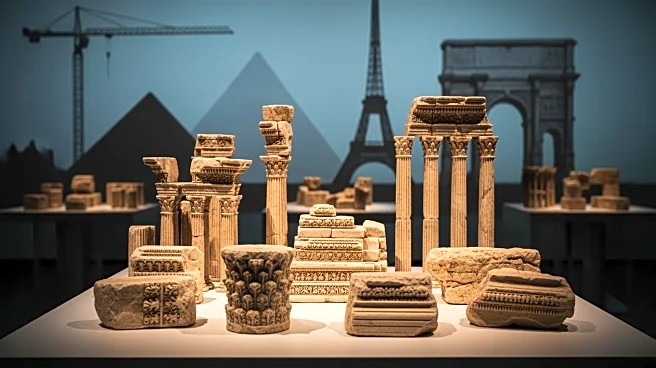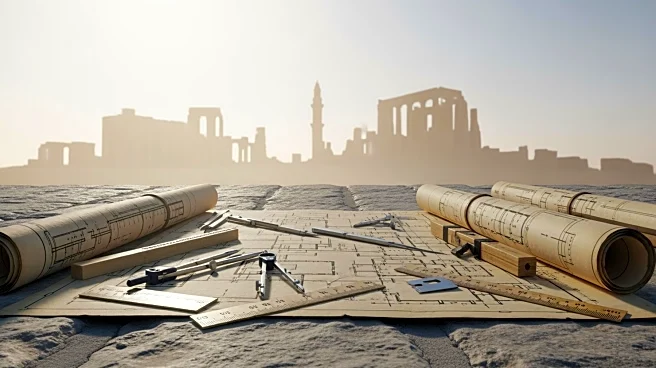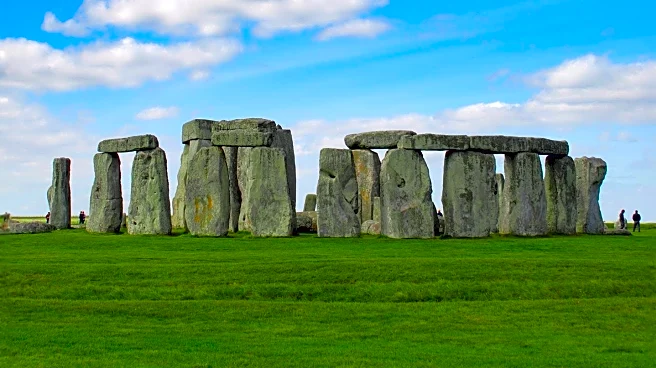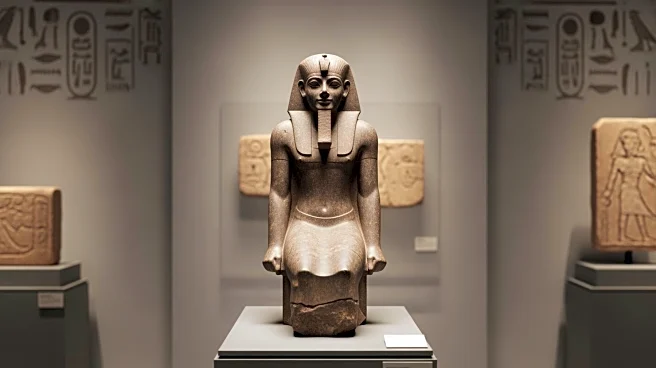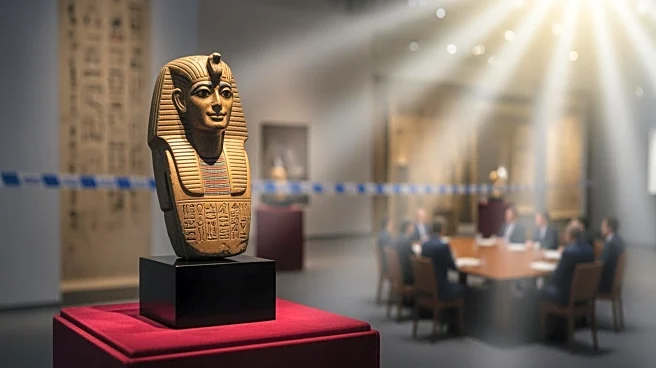What's Happening?
Plans are underway to rehabilitate the ancient Syrian city of Palmyra following a comprehensive international meeting organized by UNESCO and the heritage charity Aliph. The conference, held in Switzerland, brought together heritage experts, antiquities
officials, and members of the Syrian community to discuss the restoration of Palmyra's museum and artefacts. Recommendations include launching an international expert task force to remove Palmyra from the UNESCO List of World Heritage in Danger. Valery Freland, executive director of Aliph, emphasized the international community's commitment to these plans, which include rehabilitating the museum, restoring artefacts, and repairing infrastructure. The Syrian Directorate General of Antiquities and Museums also issued recommendations for stabilizing the museum's collection and involving local communities through training programs.
Why It's Important?
The rehabilitation of Palmyra is significant as it represents a cultural crossroads and a symbol of intercultural dialogue and resilience. Restoring the site could provide hope and economic benefits to the local community, which has suffered from years of conflict and destruction by ISIS. The involvement of international experts and local communities in the restoration process highlights the importance of preserving cultural heritage and fostering intercultural cooperation. The successful rehabilitation of Palmyra could serve as a model for other heritage sites affected by conflict, demonstrating the potential for cultural tourism to contribute to economic recovery.
What's Next?
The task force plans to begin work in January 2026, focusing on finding an operator for the museum and initiating small rehabilitation pilot projects. Challenges such as limited security, unexploded ordnance, and gaps in documentation will need to be addressed. The conference highlighted the need for proper infrastructure, including electricity and clean drinking water, to support the site's restoration and benefit the local population. The involvement of local communities through training programs and workshops will be crucial in ensuring the sustainability of the restoration efforts.
Beyond the Headlines
The restoration of Palmyra not only aims to preserve cultural heritage but also to rebuild the relationship between the ancient site and the nearby modern city. This connection was once economically beneficial, and its reestablishment could contribute to the region's recovery. The project also underscores the ethical responsibility of the international community to support regions affected by conflict and cultural destruction. The story of Khaled al-Asaad, the museum's former head of antiquities who was killed by ISIS, serves as a poignant reminder of the sacrifices made to protect cultural heritage.
